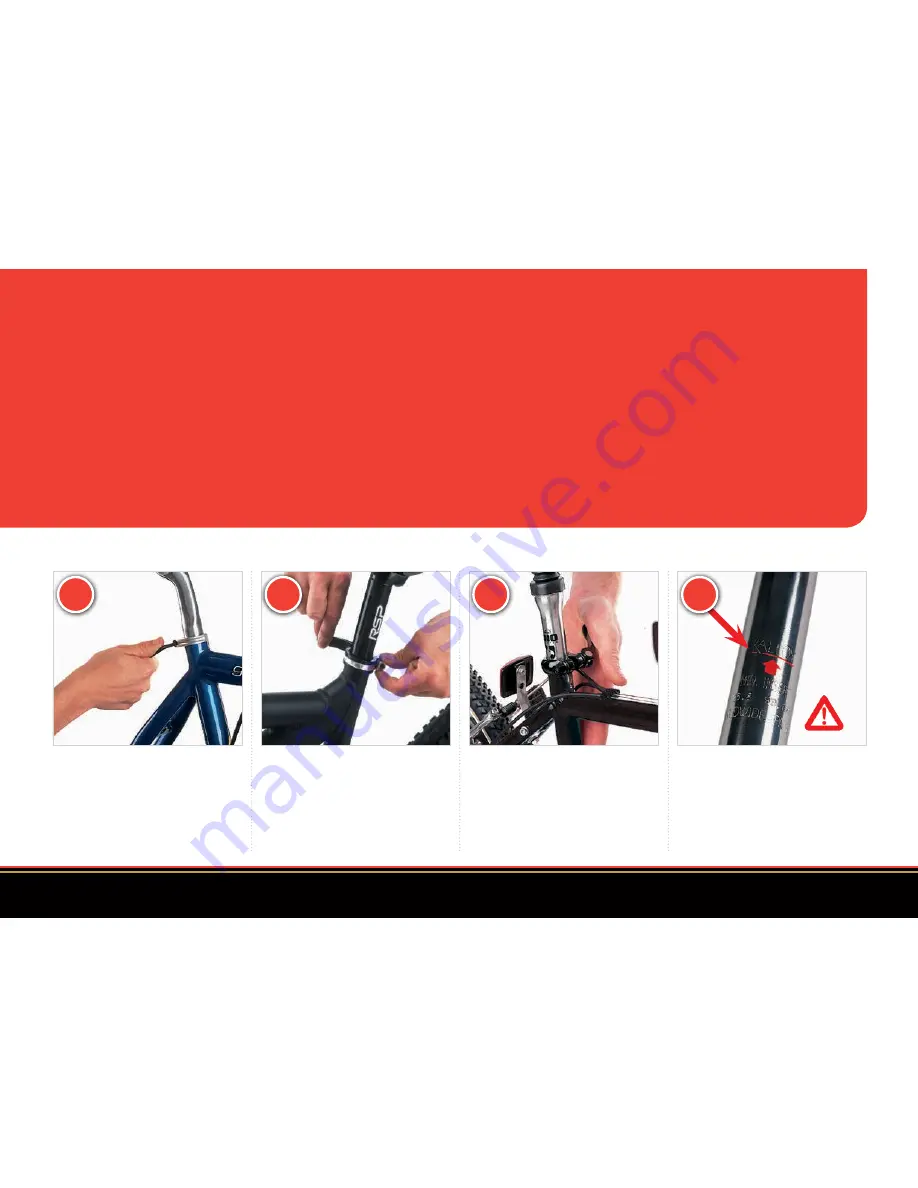
18
for further information consult our website
www.raleigh.co.uk •
for video support & download
sADDLE ADjUstmEnt
There’s no hard and fast rule for setting up the riding position on a bike.
The best starting point is to set the saddle height so that you can get the ball
of your foot on the ground while you’re sitting on the saddle.
When you have to raise the saddle, don’t lift it any higher than the limit mark.
There’s a danger that the seat post will break or fall out of the frame if you do.
Fit a longer seat post or buy a bigger bike if you need the saddle higher than
allowed by the limit mark.
There is also a fore-and-aft adjustment but you must only move the saddle to
another position along the parallel section of the saddle wire, marked by the arrows
below. Don’t try to force the saddle any further in either direction or you’ll break
the saddle clip. Be careful also when tightening the bolt under the saddle or you’ll
damage the alloy threads.
Start with the saddle right in the middle of the range of adjustment and try a short
ride. The main thing is to find an easy and comfortable reach to the handlebar
grips. But this also controls the angle of your body, so experiment by moving the
saddle a centimetre at a time until you find the best combination. Check also that
you’ve got a good view of the road ahead, without cranking your head back at an
uncomfortable angle. As for saddle angle, keep it more-or-less parallel to the ground.
If your bike is fitted with a shockpost that moves up and down to absorb bumps,
adjust the saddle a little higher than normal to allow for your own weight. If you
find that the shock post hits the bottom of its travel quite often, even after adjusting
it, your retailer will supply you with a stronger spring, which should stop that
happening. Different springs are easy to fit - just undo the adjustment screw all
the way.
When altering the height of the saddle,
you must not pull the seat post out any
further than the limit mark. If-you do,
there’s a danger that the seat post will
either break or fall out of the frame when
riding over rough terrain.
A quick release seat post clamp must
be tight enough to hold the seat post in
place on the roughest terrain. With the
quick release lever fully open, tighten
the knurled nut as far as you can with
your fingers, then undo it one full turn.
Next, start to move the Q/R lever.
It should be easy to move at first,
then harder as the lever gets nearer
to the frame, then easier just before
it hits the frame. Turn the knurled nut
anti-clockwise if the lever is too tight to
reach the frame and the other way if it’s
too loose.
To alter saddle height, undo the seat
post clamp bolt at least two turns.
Then work the saddle from side to side
as you lift it up or push it down. Finally,
check that the nose of the saddle is in
line with the top tube and re-tighten the
clamp bolt.
Saddle height adjustment
1
3
4
2






























